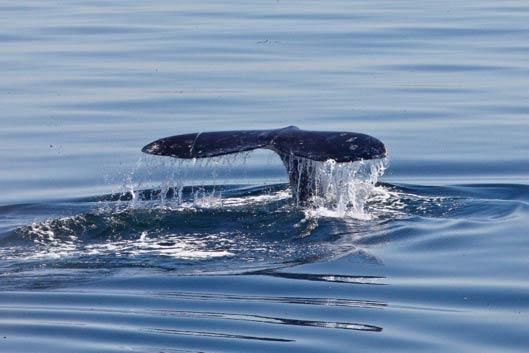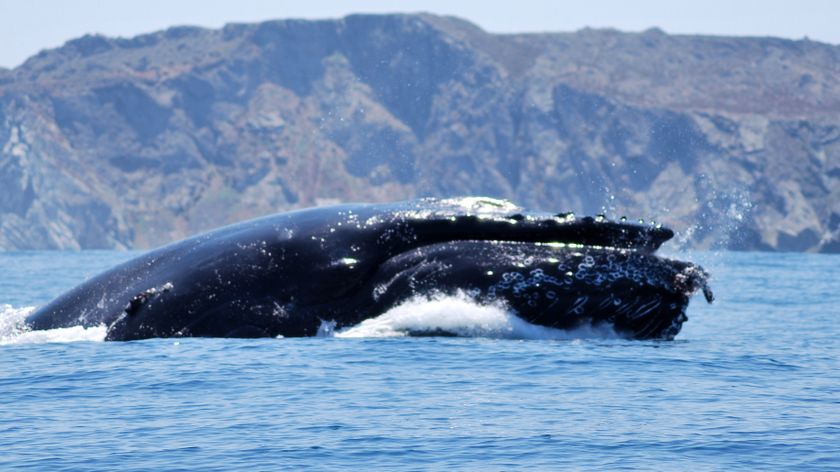
Will 2012 Be the Year of the Whale?

2012 is the Year of the Dragon; but so far, in parts of Alaska, Hawaii and the Pacific coast, it's already shaping up to be the Year of the Whale:
* The annual southward migration of gray whales began earlier than usual, with grays showing up off Dana Wharf in Southern California on Nov. 26, a month earlier than the previous year. Grays migrate from their Alaska feeding grounds to breed in the warm waters of Baja, Mexico, before returning for the Alaska summer.
Normally, the southward migration peaks off Southern California in the second or third week of January; the northward migration of whales without calves peaks in the third week of March, and that of mothers with calves about a month later. Why the migration appears to have kicked off early is uncertain.
BLOG: Whales Adapted Appetites to Survive Ice Age
* Farther up the coast, surprised researchers spotted a half-dozen blue whales 30 miles west of Long Beach, Wash. Blues, which were heavily depleted by commercial whaling in the 20th century, likely number around 14,000 worldwide and in certain places may be increasing by about 2 or 3 percent a year -- although they are still a long way shy of the approximately 275,000 that existed before whaling began.
Blues are seen relatively frequently off the California coast, and indeed four of the six were identified, based on their skin patterns and the shape of their dorsal fins, as whales that had been previously recorded off California. The researchers who spotted the whales think it is possible that a confluence of factors may have combined to create conditions favorable for the krill on which blue whales feed; however, it is also possible, they suggested, that blues may in fact occur in Washington waters more frequently than appreciated, but that the lack of vessel traffic in those particular areas, combined with the relatively high swells in the region, mean that they are not easily seen.
NEWS: Oceans To Get Noisier With Climate Change
Sign up for the Live Science daily newsletter now
Get the world’s most fascinating discoveries delivered straight to your inbox.
* No such problem in Hawaii, where whalewatching for the area's humpbacks is a big industry, and where the first three months of the year mark peak migration season for humpbacks that swim from Alaska to mate and calve. But there was no need earlier this week to board boats to see whales; two humpbacks -- apparently a mother and offspring -- spent much of Thursday swimming in the heart of Honolulu Harbor, to the delight of onlookers. The last time humpbacks were spotted in the harbor is believed to have been 1995 or 1996.
* Even such a rare occurrence is more frequent than sighting of right whales in the North Pacific. Decimated by whaling, right whales in that region may number fewer than 100, so scientists were more than happy to hear of a sighting of one off Alaska's Kodiak Island -- and all the more so given that a photograph taken of the whale appeared to indicate that it was relatively young, a sign that at least some reproduction is continuing in the population. Whether the whale was merely an itinerant or plans to stick around remains to be seen.












